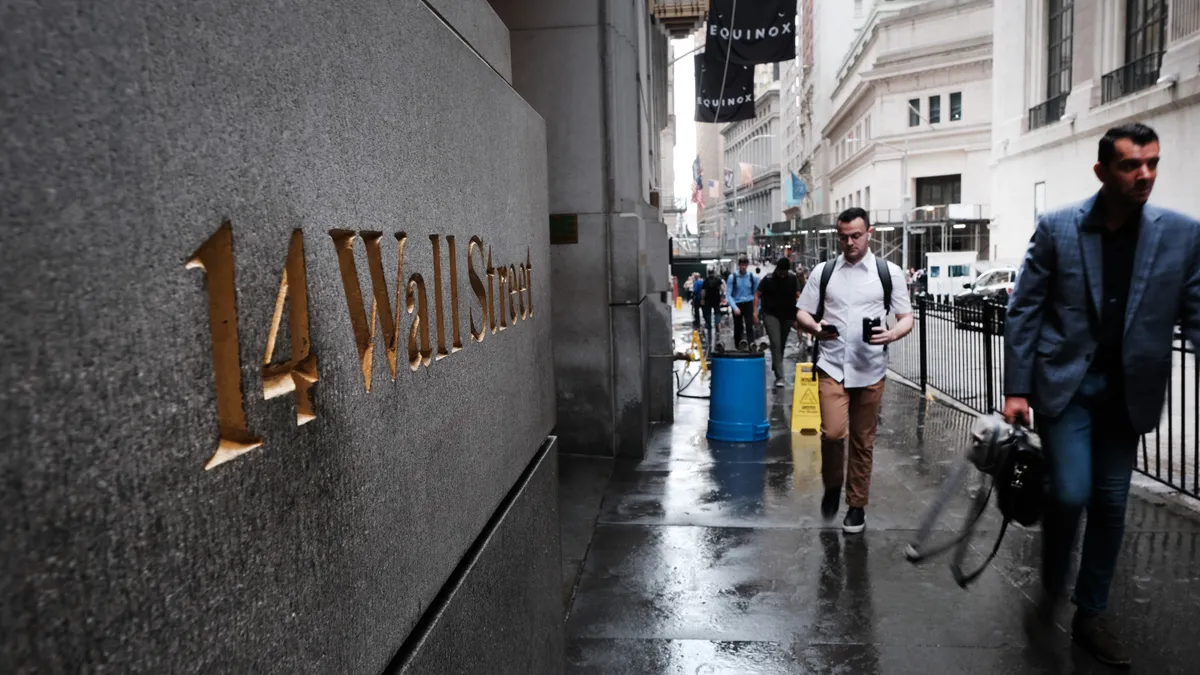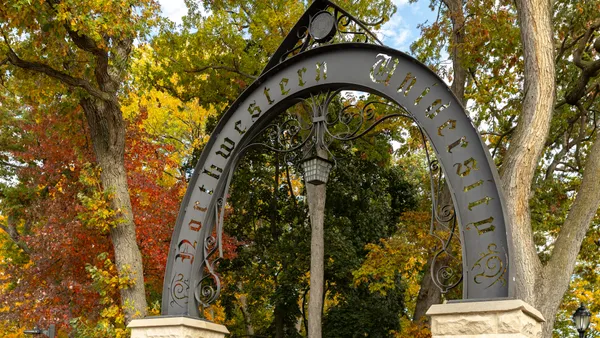Dive Brief:
- U.S. public colleges improved their operating performance in the 2021 fiscal year as states boosted funding, the federal government provided pandemic relief and institutions cut expenses, according to a report from Moody's Investors Service.
- But revenue from students fell because of changes tied to the pandemic, according to the report, which was released last week. Enrollment declines, lower auxiliary revenue and increased financial aid contributed to the drop.
- Moody's projects public colleges' operating performance will slip back down to levels seen in recent history — or weaken because of inflation.
Dive Insight:
The new Moody's report, released June 30, is in some ways a look back at the health of the higher ed sector. The agency examined 180 public universities it rates, drawing data from audited financial statements for the 2021 fiscal year — not the 2022 fiscal year, which closed at the end of June for most institutions.
Although audited data can be slow to publish, it's more accurate than preliminary figures. Moody's analyzed how the data fits into several unfolding trends.
Operating revenue grew by a median 3.1% at the public institutions Moody's examined. The indicator recovered from a median 0.6% growth rate in fiscal 2020, which was a 3.2-percentage point plunge from the year before.
But analysts see stiff headwinds for the future.
"This strong performance is unlikely to continue as universities continue to grapple with student affordability issues and enrollment losses, along with inflation affecting labor and other operating costs," the report said.
About a third of institutions, 35%, recorded declining revenue.
Median annual net tuition revenue per student fell by 2.8% in fiscal 2021. That's a much sharper decline than in 2020, when the metric slipped by 0.7%. It came amid enrollment declines, pricing constraints and rising competition for students, Moody's said.
A whopping 71% of public universities said net tuition per student declined in fiscal 2021. Just 56% reported declines in 2020.
Tuition discount rates in the group climbed to a median 36.4% in fiscal 2021, up from 33.9% in 2020.
Full-time-equivalent enrollment fell by a median 1.9% at public universities in fiscal 2021. It was the third straight year Moody's tracked an enrollment loss for the public sector.
Moody's calculates a metric for median net charges per student that combines tuition and auxiliary revenue. In fiscal 2021, it was about $12,240. That's down from about $12,990 the previous year.
Offsetting all of the red ink were public funding and investment returns.
State funding per student went up by a median 6% between 2019 and 2021. It rose to about $7,460 in 2021, up from about $7,100 the year before and $7,010 two years prior.
The median return on cash and investments, which includes changes from investment returns and colleges' operating performance, came in at 8% in fiscal 2021. That was a steep increase from 2.6% the year before.
Median cash on hand rose to 191 days in 2021, up from 162 days in 2020.
But unfunded pension liabilities are driving up median adjusted debt compared to operating revenue. Moody's expects unfunded pension liabilities to keep driving up public universities' costs in the future.
"The exposure to pension liabilities at public universities can vary by state, but the growth in liabilities can present credit challenges, such as increased fixed costs," the report said. It also warned that states might shift more pension costs onto public universities.
Long-term debt ticked up only slightly when excluding commitments for pensions and other post-employment benefits. Colleges held back on capital spending as leaders eyed weak enrollment, supply chain problems, labor shortages and other business disruptions, according to Moody's.
Meanwhile, colleges' facilities aged. The median plant age in fiscal 2021 hit 15.6 years, climbing from 15.2 the year before. In 2017, it was just under 14 years.
The new data from Moody's echoes several other recent reports showing a higher ed sector that's lost students, struggled with pricing pressure and drawn heavily from government funding during the pandemic — all while facing inflation.
Undergraduate enrollment fell 4.7% in spring 2022 versus the year before, the National Student Clearinghouse Research Center said in May. Declines played out across public and private institutions, but community colleges took the largest hit.
In June, S&P Global Ratings looked at institutions it rates and found emergency government funding made up more than 4% of adjusted operating revenue at nearly a third of colleges in fiscal 2021. The median college received $13.2 million in government relief funding.
Concerns about net tuition revenue aren't limited to the public sector. Private nonprofit colleges reported a decline in net tuition revenue from first-time undergraduates in the just-ended fiscal year, according to an annual study released in May by the National Association of College and University Business Officers.
Moody's has previously raised concerns about inflation hitting college budgets. In April it said colleges face their highest expense growth in more than a decade, even as investment markets turned volatile. Tuition-dependent colleges and those without big brand names face increased risks, it said at the time.














